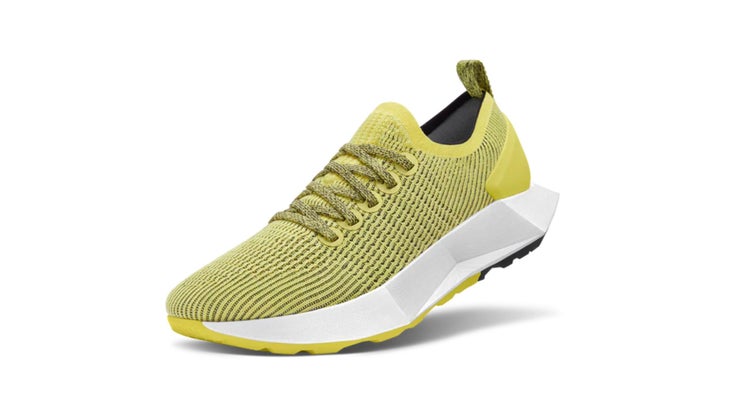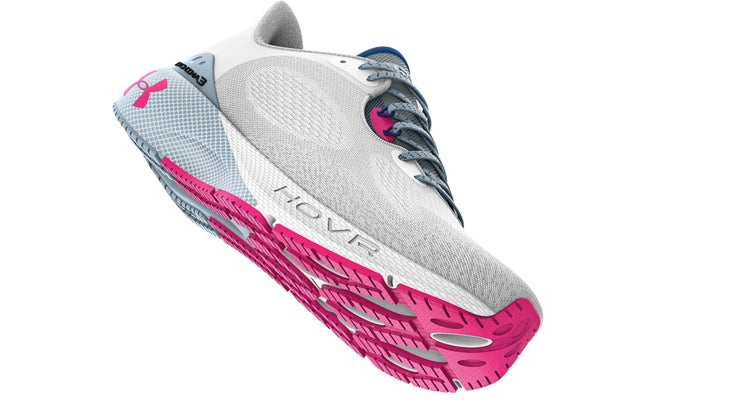“], “filter”: { “nextExceptions”: “img, blockquote, div”, “nextContainsExceptions”: “img, blockquote”} }”>
To access all of our workouts, gear, and race coverage, plus exclusive workout plans, FinisherPix photos, event discounts, and GPS apps,
> » »
If you think about it, running shoes are one of the best things you can spend your money on.
For the €100-150 you spend (yes, there are models that cost a lot more), you’re investing heavily in your fitness for the next four to eight months. But it’s also a bit of a paradox, because there’s the notion that the more you run and the healthier you are, the faster your shoes wear out and the sooner you’ll have to buy a new pair.
How long should your running shoes last? It’s generally accepted that most pairs will last between 350 and 500 miles, but that depends on the type of running you do and many other factors, says Sonya Estes, owner of Runner’s Roost store in Lakewood, Colorado.
These are just estimates, but it’s important to realize that foam midsoles, synthetic fabrics, rubber outsoles, and even laces can start to break down after about 200 miles.
In recent years, Estes says he’s seen a trend for certain shoes to last longer or wear more evenly, in part because there are fewer shoes with dual-density support on the medial side. But, she admits, all shoes break down eventually, and running too long in shoes that show signs of wear and tear can lead to changes in your gait, less protection for your feet, general discomfort or injury from overworked, she said.
“It’s one of those things where some people think it’s a certain mileage and some people think it’s a set number of months, so we tell them to come back after a few months to see how they’re doing,” she says. “And with some of the best rubber outsole materials from Vibram and Continental, some shoes will last longer than that. So it really depends on the runner and the shoe.
Even with this runner/shoe variability, there are still things you can do to make your shoes last a little longer. Here are some tips for getting the most out of your kicks.
RELATED: Where to donate your old triathlon equipment
Wear your shoes only for running
Many running shoes go well with jeans and can complement a casual outfit. But it’s best to avoid wearing your running shoes for anything other than running. Wearing your running shoes as everyday shoes for walking the dog, running errands, or mowing the lawn will change your shoe wear patterns, reduce the life of the shoes, and ultimately change your gait slightly and possibly lead to be excessive pain or excessive injury.
Keep in mind that your running shoes are particularly fragile
Featherweight “super shoes” designed for half marathons and running marathons have a much shorter lifespan because the midsole foam materials are more delicate. They just can’t handle a lot of miles. If you save these shoes for race day, you could be in four to five races. But if you’re also using them for long runs or quick workouts, they can get baked in after around 250-300 miles. Keep in mind that super shoes are also priced higher than your typical sneakers, so you get even fewer miles for your dollar.
Develop a Shoe Quiver
Try to avoid running in the same pair of shoes every day. Instead, alternate between two or more different patterns each week depending on the type of running you do and the surface you run on. For example, you can wear a more comfortable pair of shoes for longer runs or recovery runs and a lighter, firmer shoe for faster workouts such as tempo runs, fartlek runs, and intervals. Rotating the shoes during the week will not only extend the life of each pair, but will also engage the small muscles in your feet and legs differently and help you avoid overuse injuries. Also avoid wearing your road running shoes when running on technical trails with rocks and other debris to preserve their outsoles; conversely, super sticky, knobby outsoles can wear out on pavement faster than you’d like.
RELATED: The 21 Best Running Shoes for Every Type of Running
Take care of your shoes
Running shoes are only good if you treat them. Rinsing your shoes with a hose or under the tap after running through mud or finishing a hot, sweaty run will help reduce wear. Speed up the drying process of wet shoes by stuffing them with newspapers or dry washcloths or by putting them in the sun briefly, but never put the shoes in a dryer. Also keep your shoes indoors, but not in your car or garage, where extremely hot or cold temperatures can have a temporary or permanent effect on the materials and performance of the shoe.
Don’t slip them on and off
Take a moment to properly put on your shoes before a run. And don’t take your running shoes off by stepping on the back of one shoe with the other and pulling your foot up without unhooking the shoe. Not only does this strain the muscles in your feet, but it stretches the materials of the shoe. The only thing worse than taking your shoes off without untying them is putting them back on without untying them. It may seem like a time saver, but if you put them on with the laces still tied, you’ll force your foot to squeeze them and alter the shape of the shoe.
Recognize the signs of a tiring shoe
There are plenty of telltale signs that suggest you’re ready to pull out one pair of shoes and buy another pair. The former are obvious signs of wear on the outsole tread or mesh upper. If you feel that your shoes have lost their bounce or snap and are no longer putting a spring in your step, it could mean that the midsole foam has compressed and lost its ability to rebound completely.
Finally, if you start to feel unusual aches or pains from a pair of shoes you’ve been running in for a while, it likely means the shoe has broken down to the point of no return.
Take off your shoes
Although we’ve all developed a crush on our favorite shoes, it’s only been so long that you can hold on to certain relationships. When you remove a shoe, you must permanently remove it from your running rotation, even if you keep it as a casual shoe or as a shoe you wear to do yard work. (You should still avoid walking for a long time in these shoes, because no matter what patterns of wear you’ve been wearing in these shoes, it could lead to irregularities in your gait and cause knee or hip pain.)
For the sake of environmental responsibility, try to avoid throwing your shoes in the trash. There are many organizations that will give your shoes new life so they don’t have to end up in a landfill, including A world on the move, Share your soles, and Shoe4Africa.
Some of our picks for 2022
Great shoe: Altra Vanish Carbon
MSRP: $240
Lester: 6.2 ounces (women) / 7.3 ounces (men)
Drop: 0 millimeters
The Vanish Carbon has the high energy return, smooth ride and long distance comfort expected of a great shoe. Most notably, it features a significantly lower heel height than many of its contemporaries. The Vanish Carbon’s sole measures 33 millimeters high from heel to forefoot, while the Nike Vaporfly Next%2, for reference, has a 40 millimeter thick heel and drops to a forefoot height 32 millimeters.
Another key to the Vanish Carbon’s natural ride is a unique carbon fiber plate, engineered by Carbitex. This lightweight, curved plate spans approximately two-thirds of the length of the foot, from the arch of the foot to the toes. Unlike the strong, stiff plates of most super shoes, the plate is W-shaped; two longitudinal flex grooves allow the toes to move semi-independently. The plate also flexes, but only upwards, allowing a natural forefoot flex motion as the stride rolls over the toes, while maintaining downward stiffness for a powerful push off.
RELATED: A great Zero-Drop shoe? Check out Altra’s Vanish Carbon.
Light Trainer: Allbirds Tree Flyer

MSRP: $160
Lester: 8.8 ounces (women) / 9.5 ounces (men)
Drop: 8.5 millimeters
By stomping the planet, you can lighten your mechanical impact and simultaneously reduce your carbon footprint. Allbirds is about the latter but, with the advent of the Tree Flyer, is about the former as well. The Tree Flyer’s bio-based SwiftFoam midsole is what previous Allbirds “running” shoes lacked: a bit of liveliness, bounce, or even real life, instead of what had been deadly absorption that came from Earth- friendly-but-mute, all-natural absorbent materials. The stretchy, breathable eucalyptus fiber upper is big and stretchy enough for you to want to go up a size, especially if you prefer a snug fit or like tight turns. The hard heel counter provides a firm grip for the rear of the shoe. The geometric flair really stands out, making these sneakers sure winners when it comes to looks. Kermit was wrong: being green is cool.
-Adam Chase
Read more: In-Depth Review: Allbirds Tree Flyer Running Shoes
Trainer: Under Armor Hovr Machina 3

MSRP: $150
Lester: 9.5 ounces (women) / 10.6 ounces (men)
Drop: 8 millimeters
It’s hard to describe what makes the Hovr Machina such a solid and go-to everyday pair of trainers, but it probably has something to do with the UA HOVR foam which does a great job of balancing the cushioning and propulsion. While it’s not at the propulsive level of a super shoe with a carbon plate, it’s a slightly stiffer ride than you’ll find on plush, frothy pairs from brands like Hoka. Great ride aside, the Machina 3 is also equipped with unique technology that gives real-time feedback via Bluetooth to Under Armour’s MapMyRun app. It will help you with cadence, rhythm and stride, but it also requires a smartphone to do it in real time. Even if you’re not into the ‘gadget’ of the coaching platform, this is still one of the most comprehensive coaches UA has ever released.
–Chris Foster

